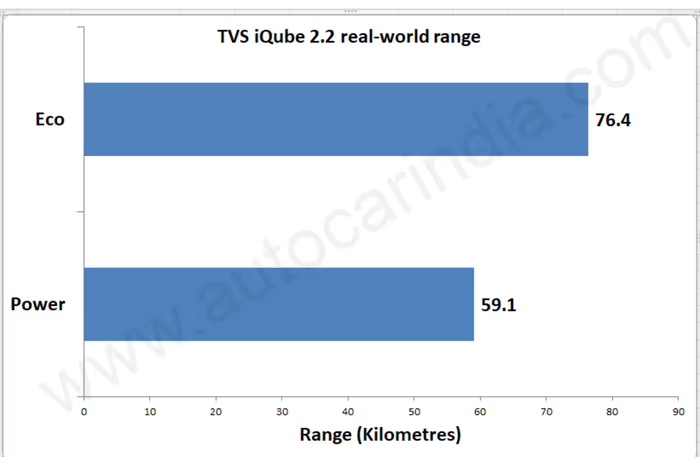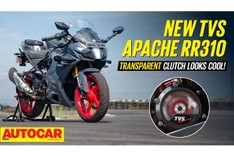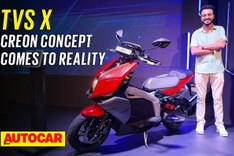TVS iQube 2.2 real world range tested and explained
The base iQube comes with a 2.2kWh battery and a claimed 75km real world range.
Published On Apr 27, 2025 08:00:00 AM
30,113 Views
Follow us onTVS recently reintroduced the 2.2kWh variant in the iQube lineup and this is now the starting point in the range. At Rs 1 lakh (ex-showroom, Bengaluru), this is one of the most affordable electric scooters in India. We’ve now subjected the TVS iQube 2.2 to our real-world range test, and the results are as follows.
- TVS iQube has a 2.2kWh Li-ion battery and a hub-mounted motor
- Real-world range is 59.1km in ‘Power’, 76.4km in ‘Eco”
- 650W charger means a quick charging time of 3hr24min
TVS iQube 2.2 real world range
The iQube’s 2.2kWh battery sends power to a BLDC hub-mounted motor, making 4.4kW and 33Nm of torque. TVS claims the iQube 2.2 can do a claimed 75km but in our range tests, the scooter actually covered a little more distance, 76.4km, in Eco mode. In Power mode, where the range indicator on the dash shows 60km, the scooter went for 59.1km before it ran out of charge.

The iQube 2.2 has regenerative braking and we left it on for the duration of our test in both of its modes. At 110kg, the iQube 2.2 is one of the lightest e-scooters around, which will have helped it eke out this range number. Furthermore, its motor isn’t a performance-oriented one, which means it won’t drain the battery too much even when you whack the accelerator open.
Eco mode restricts you to 45kph and has gentler acceleration compared to Power mode but even so, it is perfectly usable and you can climb flyovers with a pillion onboard without a hitch. Power mode has more energetic acceleration and allows you to hit the claimed 75kph top speed. Since the iQube 2.2 comes with a 650W charger, topping up a flat battery to full takes 3hr24min, which is one of the quickest times in the e-scooter market today.
Autocar India’s range testing
Before our real-world range test, the battery of our two-wheeler on test is fully charged, and we maintain tyre pressures as recommended by the manufacturer. The two-wheeler is then driven in a fixed loop in the city and highway (for electric bikes that are capable of doing so), and we maintain certain average speeds while following the speed limit. The vehicle is then run until the battery is completely drained and it shuts down or does not go ahead even if the screen is on.
Also See: Suzuki Access 125 real-world fuel economy tested, explained
Copyright (c) Autocar India. All rights reserved.




























.jpg?w=234&h=156&q=90&c=1)




Comments
Member Login
Personal Details
No comments yet. Be the first to comment.